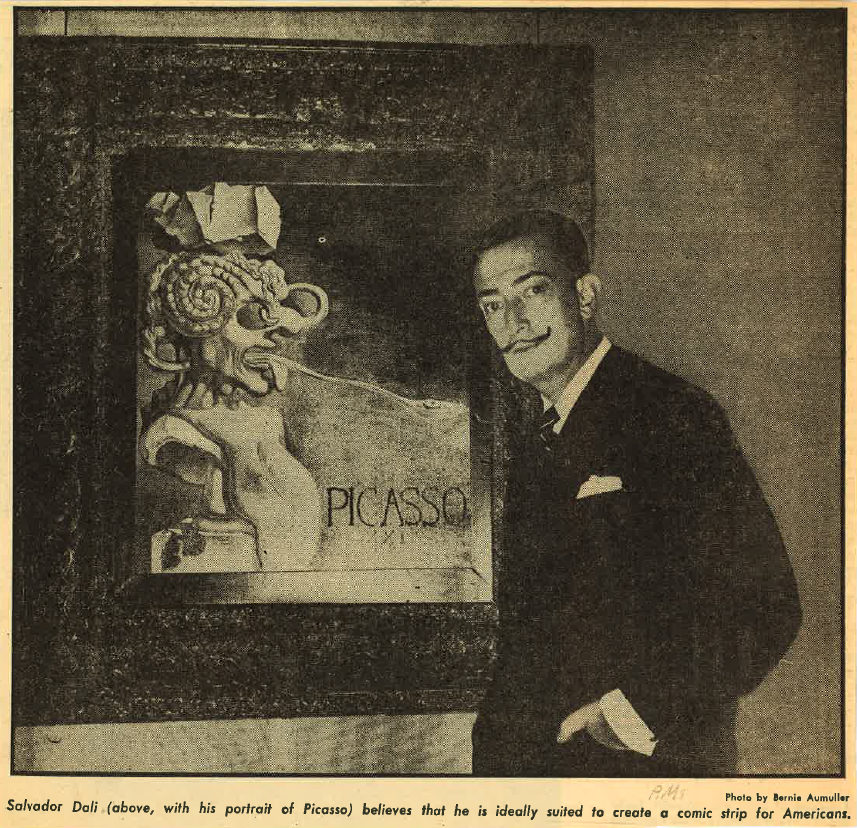One does not readily associate “firsts” in aviation history with either Washington, D.C. or with the Scottish-born scientist and engineer Alexander Graham Bell. Alas, the first fatality in a powered aircraft connects both the nation’s capital and the inventor of the telephone. The Smithsonian’s collections give testament to many aeronautical and military milestones, including the brief but significant life of Thomas E. Selfridge.
Category: Research

The world of modern art is at times criticized for a certain reputation of exclusivity and mystery in which the more inaccessible a certain artist or artwork may be, the more valuable and reputable the art becomes. Salvador Dali, the most famed member of the twentieth century avant-garde movement, Surrealism, on the other hand, challenges this perception that artistic creation is a closed-off affair for an elite few. Sure, Dali was no humble man of the people, and in fact is famous for his eccentric, narcissistic personality as he continually declared himself the most talented and significant artist of his generation (let’s not forget his autobiography graciously titled Diary of a Genius). However, Dali walks the line between artist and popular culture sensation as he created artwork that was meant to be seen and consumed by everyone. Many examples of Dali’s remarkable work may be found in the Art and Artists Files of the Hirshhorn Museum and Sculpture Garden Library and the American Art & Portrait Gallery Library at the Smithsonian, as well as the nearby National Gallery of Art Library.
A recent book to which Leslie Overstreet, the Smithsonian Libraries curator of natural-history rare books, contributed has been awarded the John Thackray Medal by the Society for the History of Natural History for “significant achievements in the history and bibliography of natural history.”
The Smithsonian will soon develop procedures for complying with the White House Office of Science and Technology Policy’s directive on public access to federally funded research. That means that most papers authored by Smithsonian staff and affiliates will be made available to the public at no charge, some after an embargo period. There are several methods being developed by other federal agencies to meet this requirement and the Smithsonian has kept abreast of these policies. But aside from the White House mandate, it is clear that Smithsonian authors are increasingly making their scholarship freely available via publishing with an open access (OA) publisher. On average, there are about 350* OA papers published each year by Smithsonian scientists. This represents nearly 15% of research output.
 This post was written by Kendra Hurt, an Instructional Design Intern at the Biodiversity Heritage Library & Smithsonian Libraries. Kendra is graduating this May from the University of Maryland with a Master of Library Science.
This post was written by Kendra Hurt, an Instructional Design Intern at the Biodiversity Heritage Library & Smithsonian Libraries. Kendra is graduating this May from the University of Maryland with a Master of Library Science.
This semester I have worked with Bianca Crowley and Trina Brown as an Instructional Design intern, and I’ve been creating videos, writing instructions, and conducting sessions on using Prezi and how to search the Biodiversity Heritage Library (BHL) via advanced search.
Last fall, I marked the season for the harvesting of grapes to honor John Adlum, the little-known “Father of American Viticulture.” The origins of the first commercially viable vine in the American wine industry can be traced to the District of Columbia.
Now, with the great interest in Alan Turing, the recent auction sale of this English mathematician’s 56-page notebook for more than a million dollars, and the success of the movie, “The Imitation Game,” let’s look at another (and earlier) computer pioneer genius, Herman Hollerith, and the importance of his Washington invention. Hollerith was, as stated in the title of his principle biography, “The forgotten giant of information processing.” Again, it was the beginning of a huge industry—surprisingly but not at all incidentally—in the nation’s capital.
History in the Making…
In addition to rare books and special collections housed in the DeWitt Clinton Ramsey Room, one of the valuable resources located in the National Air and Space Museum’s Library is its rich and diverse collection of books and journals which focus on the meteoric rise and advances in the field of aviation during World War II. May 8th marks the 70th anniversary of V-E Day, or “Victory in Europe Day”. To commemorate this historic occasion, organizations including the Commemorative Air Force, Texas Flying Legends, Fagen Fighters, and the Fighter Factory are coming together for the World War II Victory Capitol Flyover.


